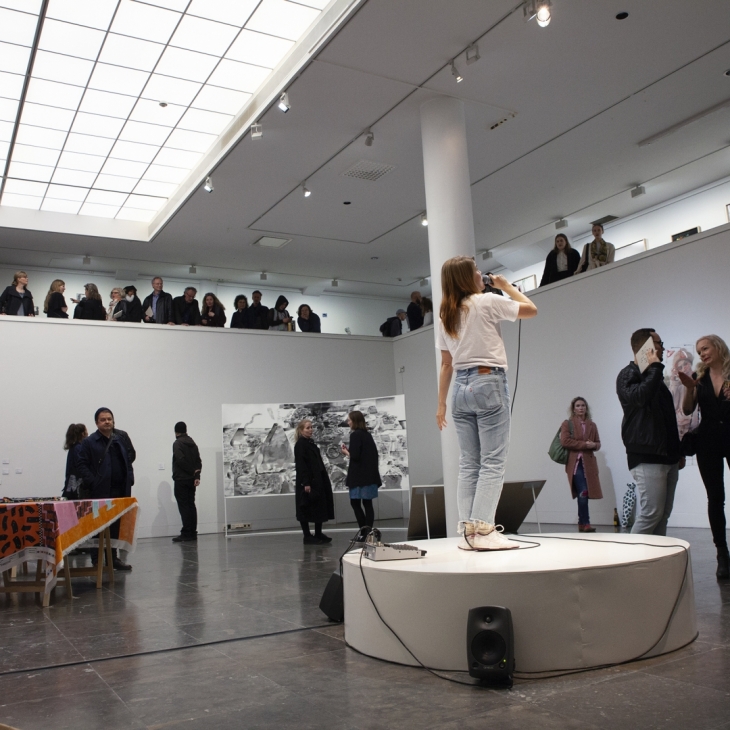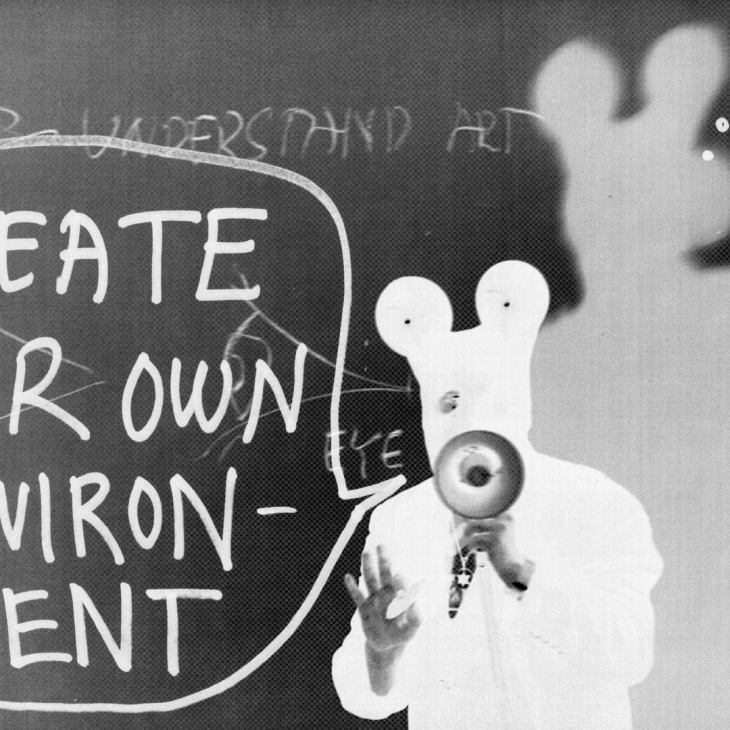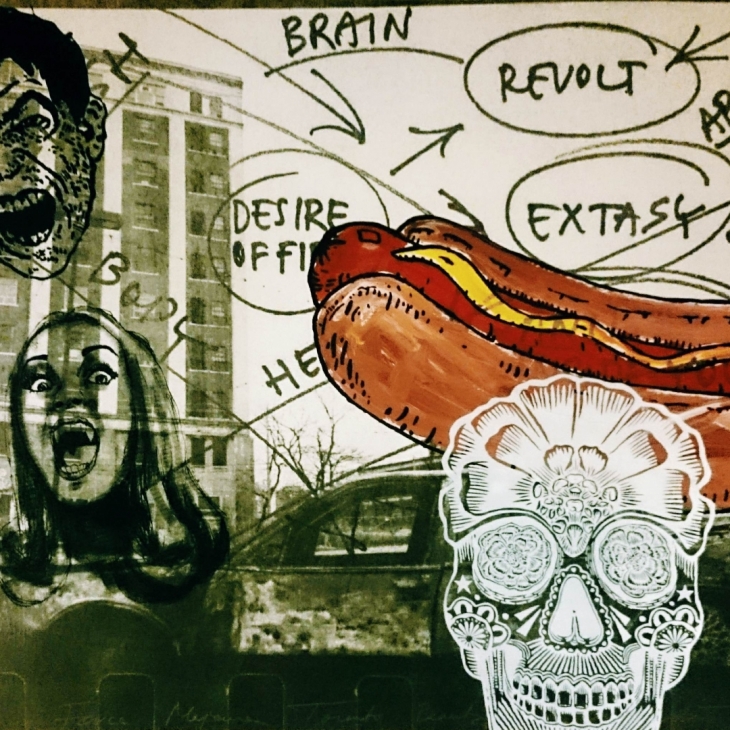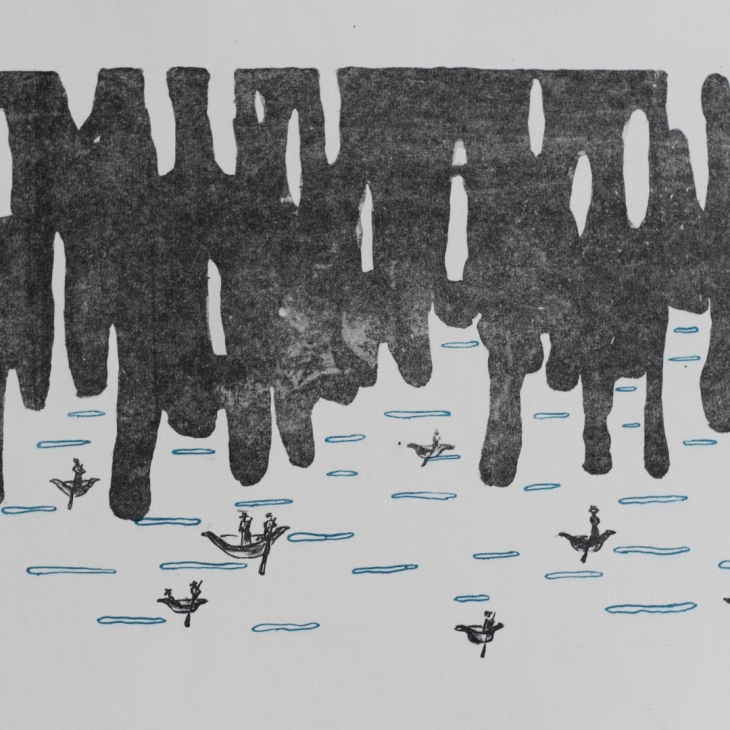how to _______ alone, 2018
performance (gig)
installation: stage, sound technique, 60 T-shirts
NB! The artwork does not have fixed measurements
Artist´s comment on the artwork:
“”how to ______ alone” was a long lasting performance, a gig, which I, performer, did on four days in the former venue of the Amos Anderson Art Museum in Helsinki, Finland. As a part of the work I was selling T-shirts where the title “how to ________ alone” was printed. In the space there was a white circle shaped stage with sound technique. The task for a performer was to repeat, during the exhibition’s opening hours (6-7h), a sentence “how to work alone” through singing it. The song was made of a melody which reminded of a worker’s song or a warm up practise for the voice. What was important was that it was so easy that anyone could join to sing it. The performer was interacting with the space and spectators. She could lay on the stage, leave the stage, go really close to a spectator, whisper the song or shout it out loud, she could go to the corner etc.
Concept:
In my artistic thesis I decided to work alone. My first question was: how do I work alone? Working in the studio brought up observations that made me consider my relationship to the individualistic art worker that our culture has created. Along with the creative work, my job entailed communication, emotional labour, marketing, scheduling, meetings, and other art related tasks…
On YouTube, I watched philosopher and performance art theorist Bojana Kunst’s lecture, Artist at Work, which is based on the book, Proximity of Art and Capitalism. Kunst mentions that the artist of today is a collaborative, nomadic wanderer, a networker who is perpetually working. However, the artist works in seclusion and at a distance from others, inside a kind of protective circle. I wondered how to relate this. The performance, how to ________ alone, is my artistic thesis for the Academy of Fine Arts in which I look at the relationships between the art worker, the work of the artist, and the work of art.”














